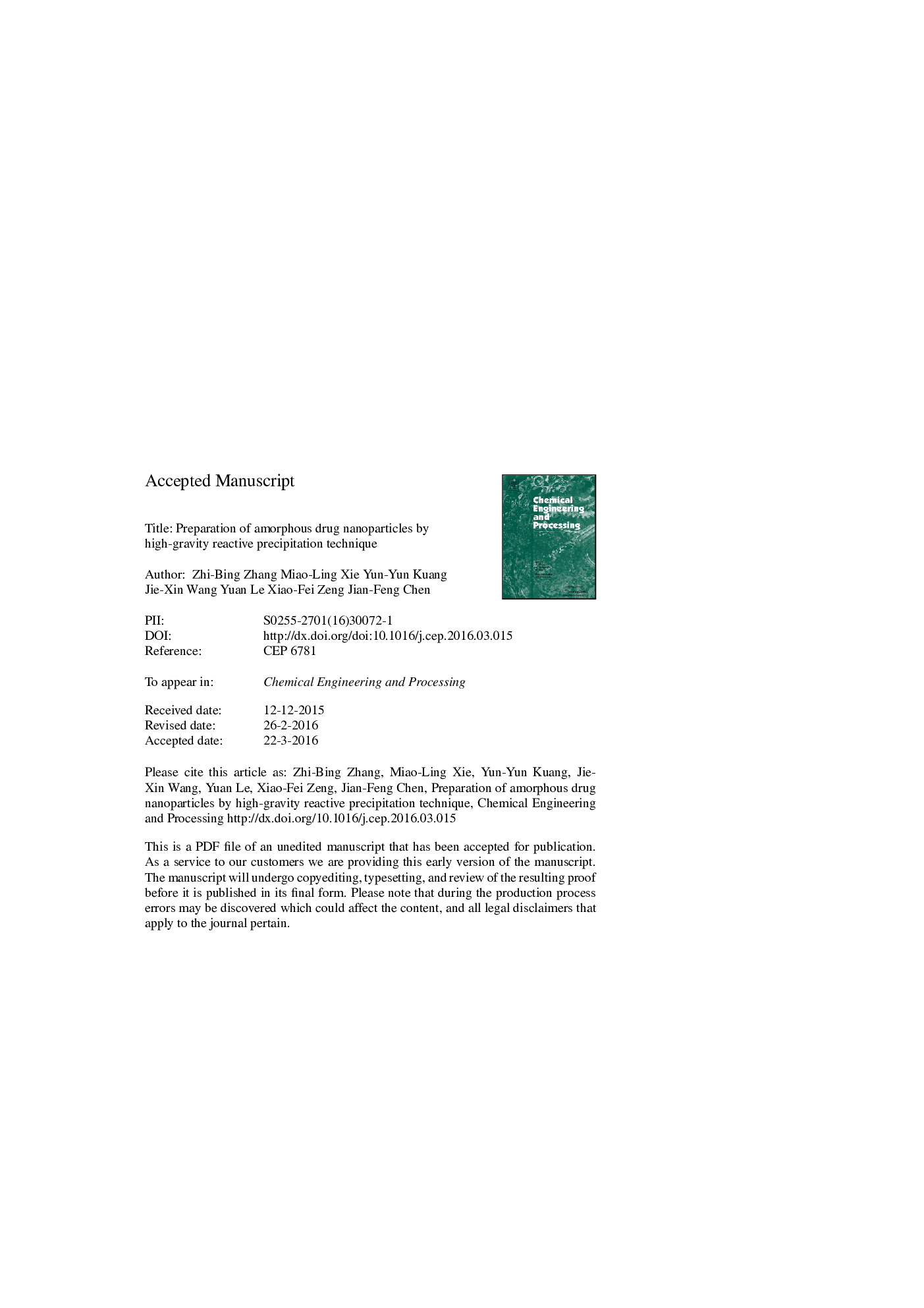| Article ID | Journal | Published Year | Pages | File Type |
|---|---|---|---|---|
| 687806 | Chemical Engineering and Processing: Process Intensification | 2016 | 32 Pages |
Abstract
For many water insoluble acidic or alkaline drugs, amorphization and nanonization represent an effective bioavailability enhancement strategy. Cefixime (CFX) was chosen as a model drug, and amorphous nanoparticles were prepared via a typical process intensification technology: high-gravity reactive precipitation (HGRP). The effects of temperature, rotating speed, overall flow rate, and drug concentration on the particle size and size distribution were investigated. Under the optimum conditions, spherical nanoparticles with a mean size of 45Â nm could be precipitated. After filtration, redispersion and spray-drying processes, the obtained CFX nano-powder showed a good stability and exhibited a tremendously enhanced saturation solubility, reaching â¼11 times higher than that of raw CFX. Furthermore, CFX nano-powder achieved 100% drug dissolution within 2Â min while raw CFX did not dissolve completely after 45Â min. Since the production capacity of lab-scale RPB reached 2.3Â kg/h, HGRP method might offer a general platform for mass production of drug nanoparticles without the use of organic solvents and pharmaceutical additives.
Related Topics
Physical Sciences and Engineering
Chemical Engineering
Process Chemistry and Technology
Authors
Zhi-Bing Zhang, Miao-Ling Xie, Yun-Yun Kuang, Jie-Xin Wang, Yuan Le, Xiao-Fei Zeng, Jian-Feng Chen,
